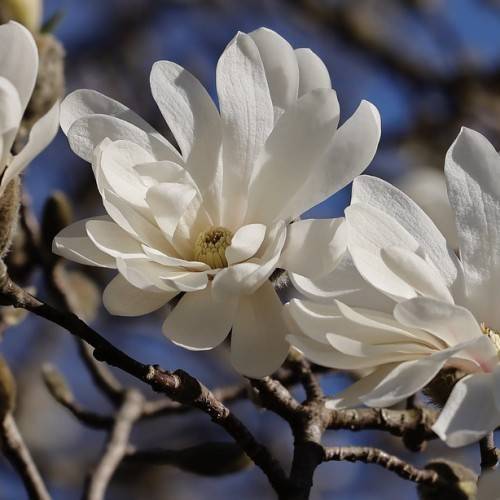
star magnolia
Magnolia stellata 'Royal Star'
Cycle:
Perennial
Watering:
Average
Hardiness Zone:
4 - 8
Flowers:
Flowers In Spring
Sun:
Full sun,part shade
Leaf:
Yes
Growth Rate:
Low
Maintenance:
Moderate
Care Level:
Medium
watering
Star magnolia (Magnolia stellata 'Royal Star') should be watered weekly once the soil is dry to the touch, providing 1–2 inches of water each time. The plant should be watered near its base, ensuring the entire root system absorbs the water. It's important to not let the soil become soggy or overly-wet, as this can lead to root rot or other diseases. However, the plant should not be left to dry out fully between watering. Additionally, mulching around the base of the star magnolia with organic material such as compost can help to retain moisture and prevent weeds.
sunlight
Star magnolia (Magnolia stellata 'Royal Star') is a deciduous species of plant that thrives best in full sun or partial shade. While this plant can tolerate the shade, it requires a minimum of 4 hours of direct sunlight each day in order to flourish. Ideally, direct sunlight should be obtained early in the day as this will give the plant plenty of energy for the rest of the day. Direct sunlight during the heat of the day can be damaging to the plant, so planting in an area that provides earlier morning sun is best. With the proper amount of sun, star magnolia is sure to produce its beautiful white star-shaped flowers that make it an attractive landscape choice.
pruning
Star magnolia (Magnolia stellata 'Royal Star') does not require much pruning; it only needs to be done once a year and primarily for the purpose of maintaining a desirable size and shape. Pruning should be done soon after blooming, typically in late spring or early summer. It is best to remove only dead, diseased or crossed branches, leaving the natural structure of the shrub as much as possible. If size needs to be maintained, no more than 1-third of the total growth should be removed. Generally, however, it is best to prune only as needed and avoid severe pruning.
